
The great Japanese director Yasujiro Ozu was an acknowledged master of the pillow shot. It sounds … a little dirty, doesn’t it? What could it mean? Can you guess? I would bet that if you don’t already know, you won’t guess what a pillow shot is or why it’s called that.
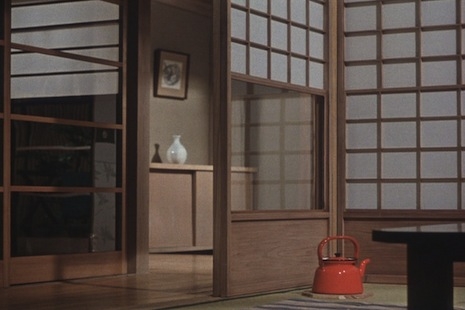
Recently I’ve become fascinated by them. It’s a technique that stands right at the border between narrative and non-narrative cinema. Being Ozu, of course, it’s in the quietest, most subtle way imaginable.
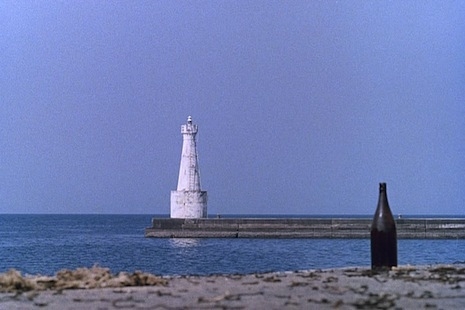
A “pillow shot” is a cutaway, for no obvious narrative reason, to a visual element, often a landscape or an empty room, that is held for a significant time (five or six seconds). It can be at the start of a scene or during a scene. At a minimum, in Ozu’s work, these pillow shots inject a sense of calm and serenity and contribute to the elegant and stately pacing of his movies. But they may mean quite a bit more.
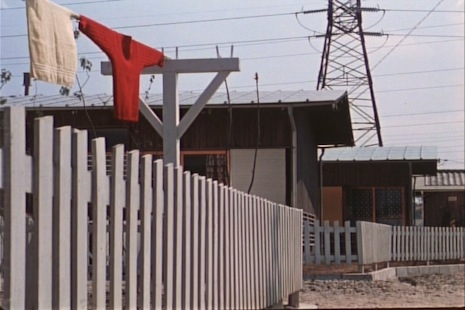
The term “pillow shot” was coined in connection with Ozu’s work by the critic Noël Burch in his book To the Distant Observer: Form and Meaning in the Japanese Cinema: “I call these images pillow-shots, proposing a loose analogy with the ‘pillow-word’ of classical poetry.” In a note, Burch cites Robert H. Brower and Earl Miner thus: “Makurakotoba or pillow-word: a conventional epithet or attribute for a word; it usually occupies a short, five-syllable line and modifies a word, usually the first, in the next line. Some pillow-words are unclear in meaning; those whose meanings are known function rhetorically to raise the tone and to some degree also function as images.” So (by analogy) a pillow shot serves as a visual “nonsense-syllable” or non sequitur that creates a different expectation for the next scene.

In researching pillow shots, I found myself asking what the difference is between a pillow shot and an establishing shot. Indeed, some observers have decided that the differences are elusive: Luke McGrath, in his “Bullet Review” of Late Spring, also the movie of Ozu’s most known for his use of pillow shots, even says that “many of Ozu’s quasi-establishing shots can also been seen as ‘pillow’ shots.”
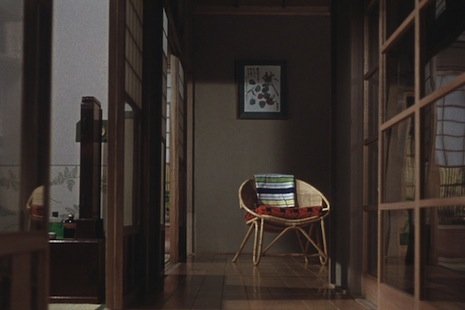
As to the function of these pillow shots, Time Out (UK) wrote in their “bluffers’ guide” to the films of Ozu, “Far from diluting our emotional response, this intensifies it by giving us time to share the feelings unfolding on screen.” That’s one aspect.
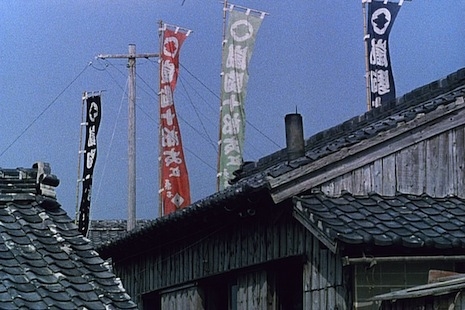
But to get the potential complexity of the pillow shot, check out this bit of prose from the Wikipedia writeup on the most famous pillow shot of them all, the “vase scene” from Late Spring:
Abé Mark Nornes, in an essay entitled “The Riddle of the Vase: Ozu Yasujirō‘s Late Spring (1949),” observes: “Nothing in all of Ozu’s films has sparked such conflicting explanations; everyone seems compelled to weigh in on this scene, invoking it as a key example in their arguments.” Nornes speculates that the reason for this is the scene’s “emotional power and its unusual construction. The vase is clearly essential to the scene. The director not only shows it twice, but he lets both shots run for what would be an inordinate amount of time by the measure of most filmmakers.” To one commentator, the vase represents “stasis,” and is thus “an expression of something unified, permanent, transcendent.” Another critic describes the vase and other Ozu “still lifes” as “containers for our emotions.” Yet another specifically disputes this interpretation, identifying the vase as “a non-narrative element wedged into the action.” A fourth scholar sees it as an instance of the filmmaker’s deliberate use of “false POV” (point-of-view), since Noriko is never shown actually looking at the vase the audience sees. A fifth asserts that the vase is “a classic feminine symbol.” And yet another suggests several alternative interpretations, including the vase as “a symbol of traditional Japanese culture,” and as an indicator of Noriko’s “sense that . . . [her] relationship with her father has been changed.”
Whew! That’s quite a lot of weight to be putting on a single static shot. But far from saying all of those “conflicting explanations” are wrong, I’m inclined to think they’re all pretty much correct. Are they mutually exclusive? I don’t see how.
The reference to such shots representing a “permanent, transcendent” element is interesting. The directorial gaze is a nonhuman one, somehow, isn’t it? As anything truly objective is? By holding such shots, Ozu emphasizes the irrelevance of human activity to nature.
Given that regular establishing shots do serve narrative purposes, what of the claim that the vase is “a non-narrative element”? Time here seems to be the key factor. A shot of that sort lasting a single second not only doesn’t alter the nature of the narrative, it can’t function as a pillow shot, i.e. do any thematic work at all. But the same shot held for ten minutes very much changes the nature of the narrative—it changes a narrative movie into an experimental movie, as Andy Warhol well knew.
I did a few searches on American instances of pillow shots, and I came up with basically nothing. But I did think of a clear example of a pillow shot in American cinema: the periodic umotivated cutaways to a lonely traffic light at night in David Lynch’s Twin Peaks:
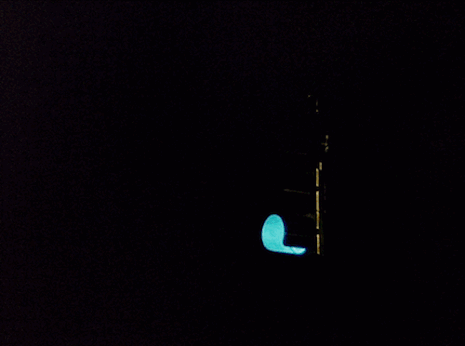
(In Twin Peaks, at several junctures the camera holds the shot of the traffic light for no narrative reason.)
So help me out here: can anyone point out some American examples of pillow shots in American movies? They’ve got to be there somewhere.
But the main reason I wanted to write about pillow shots is that they’re pretty. So here: enjoy this becalming supercut of Ozu pillow shots.
(Thanks to the indispensable website ozu-san.com, from which come the images used in this post.)
Previously on Dangerous Minds:
Akira Kurosawa: The Music Video
Akira Kurosawa: The Bollywood dance number





